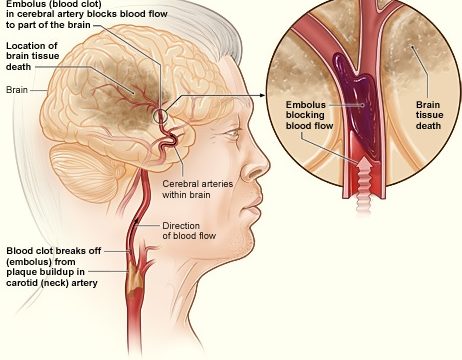“This arm’s numbness may last a few minutes and then go away. I will see the doctor tomorrow”.
Does this sentence sound familiar to you?
It seems to be a common conversation starter in the event of a stroke event if it begins at home or in the vicinity of loved ones.
In contrast, if it occurs in the vicinity of your co-workers or some not so close to you, the conversation starter seems to be much different. It may be like this: ” there is something wrong here. You need to see the doctor now”.
Can you believe that?
When a stroke occurs to someone in the vicinity of their loved ones, unknowingly they may delay calling for an ambulance when compared to situations when it occurs in front of strangers or not so close to people such as co-workers.
What a paradox!
In a way, it makes sense.
The unknown bystanders to the incident will certainly call an ambulance right away while the loved ones are still contemplating.
So, it is not enough knowing what F.A.S.T. – the acronym to recognize early stages of a stroke – refers to.
We need to act upon it by dialing for an ambulance.
There is a golden hour. The treatment outcome becomes excellent if someone received the clot-buster drug within the first hour of stroke onset. You can read more about that through this link: https://www.strokecarer.com/best-practices-3-remember-the-golden-hour/.
How do we know this for sure? Or is this just a speculation?
No.
A group of US researchers uncovered this intriguing phenomenon. They mapped how closely-knit the social networks of 175 stroke patients who arrived for hospital emergency care. Using Burt’s social capital concept, they quantified it.
They empirically demonstrated that stroke patients with a very close-knit social network arrived at the hospital later than those with a larger social network. And, closer to the tightness of the network larger the delay occurred.
Another very interesting finding was that this association did not change by sex, education status, the median income of the network or the severity of symptoms.
The researchers have documented some of the conversations that occurred between the stroke patients and the family members before they arrived late to the hospital. Find out whether some of the conversations seem familiar to you.
“No, you just wait. I will just go see my doctor in the morning”.
“There is no anything to be concerned about because it will last few minutes and go away”.
As opposed to the above conversations, when someone with F.A.S.T. symptoms with unknown people or not very closely-knit ones, the conversations may be as follows:
“Something is wrong with you. You need to go to the doctor”.
Few startling statistics
In their introduction to the paper, they highlight the following surprising statistics:
Every year in the US as many as 70 % of stroke patients arrive for emergency care six hours after its onset!
Not only that, 70 % of strokes occur at home.
Do you see how important their research project is?
In the event of a stroke, every second counts because each passing second kills about 32,000 neurons in the brain. You can read more about that through this link: https://www.strokecarer.com/journeys-to-the-brain-7-time-is-brain/.
And, moreover, successful treatment requires someone with stroke symptoms reach a hospital with treatment facilities within six hours of the onset of symptoms.
Have you ever thought about it?
You can read the full paper published in Nature Communications by clicking this link: https://www.nature.com/articles/s41467-019-09073-5.




